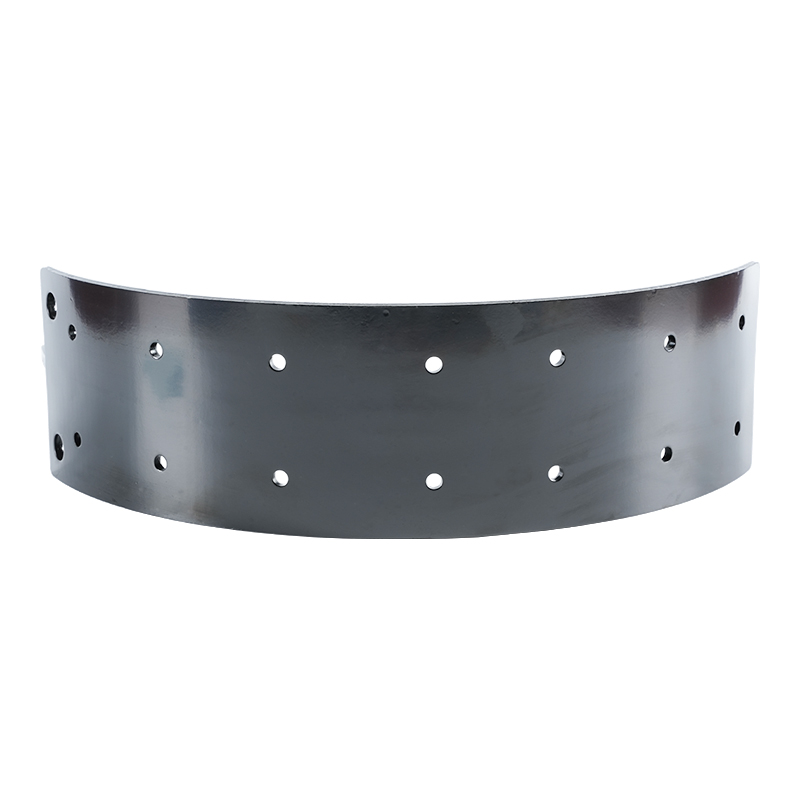Choosing the Right Brake Lining Shoes for Your Vehicle
 2025.02.26
2025.02.26
 Industry News
Industry News
The Role of Brake Lining Shoes
Brake lining shoes are the friction components that press against the inner surface of the brake drum to slow the vehicle down. When you press the brake pedal, hydraulic pressure pushes the shoes outward, making contact with the drum and creating friction, which results in the vehicle slowing down or stopping entirely.
Because of the constant friction, brake lining shoes wear down over time. Replacing worn-out brake shoes is essential not just for braking efficiency but also for the safety of everyone in the vehicle.
Factors to Consider When Choosing Brake Lining Shoes
Selecting the right brake lining shoes depends on several factors, including your vehicle type, driving conditions, and personal preferences. Let’s break down these considerations:
Driving Conditions: If you frequently drive in mountainous areas or tow heavy loads, you’ll need brake shoes that can handle high temperatures and repeated braking. In such cases, semi-metallic or ceramic brake shoes are the best options due to their excellent heat resistance and durability.
Vehicle Type: Larger vehicles like trucks or SUVs require more robust brake shoes, as they exert more pressure on the braking system. For these vehicles, semi-metallic or ceramic brake shoes are often recommended because of their superior performance and longevity. On the other hand, smaller vehicles may work well with organic brake shoes, which are quieter and more affordable.
Noise Reduction: Noise can be an important factor in choosing brake shoes. Organic brake shoes are generally quieter and cause less wear on the brake drum, making them a good choice for those looking for a smooth and silent ride. However, they may wear out more quickly compared to semi-metallic or ceramic brake shoes.
Cost: The cost of brake shoes varies depending on the material. Organic brake shoes are the least expensive, but they may need to be replaced more frequently. Ceramic brake shoes, while more expensive, provide longer-lasting performance and less dust buildup. Semi-metallic shoes offer a balance of performance and price.
Heat Resistance: High temperatures generated during heavy braking can cause brake shoes to fade, reducing their effectiveness. Semi-metallic and ceramic brake shoes are better at dissipating heat, making them suitable for vehicles that experience heavy braking.

Types of Brake Lining Shoes
Here’s a quick overview of the different types of brake lining shoes and their benefits:
Organic Brake Shoes: Made from materials like rubber, fiberglass, and carbon, organic brake shoes are gentle on the brake drum, provide a quiet ride, and are less expensive. However, they wear down faster and are not ideal for heavy-duty use.
Semi-Metallic Brake Shoes: These shoes are composed of a mixture of metal and other materials, making them more durable and heat-resistant. They are ideal for vehicles that require heavy-duty braking, such as trucks and SUVs. However, they can produce more noise and cause more wear on the brake drum.
Ceramic Brake Shoes: Ceramic brake shoes are known for their excellent heat resistance, low dust production, and quiet operation. They are ideal for high-performance vehicles or those that experience heavy braking. However, they come at a higher price point.
How to Extend the Life of Your Brake Lining Shoes
To get the most out of your brake lining shoes and avoid premature wear, here are a few tips:
Avoid Sudden Stops: Sudden braking can put extra strain on your brake shoes, causing them to wear down faster. Try to anticipate stops ahead of time to reduce unnecessary braking force.
Proper Maintenance: Regularly check the condition of your brake shoes and replace them as needed. A mechanic can inspect your braking system during routine maintenance.
Brake Smoothly: Try to avoid harsh braking, especially when driving at high speeds. Gradual braking reduces the friction and heat generated, helping preserve the life of your brake shoes.

 Eng
Eng  中文简体
中文简体









